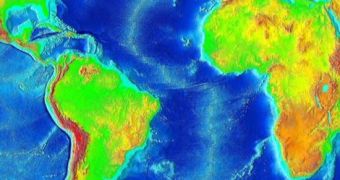For a very long time, scientists have known that the Northern Atlantic is one of the most influential areas in the world, as far as climate goes. The El Nino weather pattern originates here, and it couples with a phenomenon known as the North Atlantic Oscillation (NAO) to generate much of the weather patterns across Europe. However, since the 1970s, the region is more and more affected by global warming and climate change, and there is a very real risk that the weather patterns, which so strongly depend on the it, will soon shift their course, or take on new, devastating forms.
University of Wisconsin-Milwaukee scientist Anastasios Tsonis and colleagues have known for a few decades that, from time to time, NAO and El Nino become synchronized for a few dozen years, after which time their properties diverge again, in a repeating cycle that has been dubbed “synchronized chaos.” Some of the people who say that global warming is not real and not caused by man will try to maintain that this is proof of their theories that the planet is simply going through a natural cycle.
However, they should keep in mind that over the last thousands of years, when the northern region of the Atlantic was indeed going through these cycles, the temperatures it recorded were within normal parameters. Now, the water is becoming increasingly hot, due to the fact that more heat gets trapped inside the Earth. The greenhouse effect damages all the oceans every day, but it's only in the “upper” Atlantic that these changes truly matter.
If balance between the two phenomena is lost, then at least Europe will undergo a series of weather pattern changes that will leave everyone amazed. Scientists warn that such abrupt alterations will bring forth a reshaping of the climate all over the continent, and that the temperatures to which people there have grown accustomed to over thousands of years will be replaced by others.
Tsonis affirms that the Northern Atlantic is the “tipping point” of Earth's climate. Due to warming and less ice, the area is subjected to more and more outside influences that would have not affected it in the past. Now, if the delicate balances at work there fail, the entire world could witness the effects.

 14 DAY TRIAL //
14 DAY TRIAL //